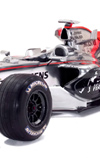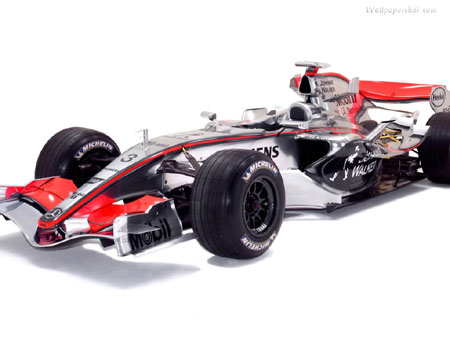Formula One exhausts
 When I last wrote a short piece on the subject of exhaust systems in Formula One, it was just ahead of the 2011 season. Little could we have predicted the central role that exhaust systems, combined with different engine management strategies, would play during the past season. The cause of the furore was the use by some of the more successful teams of exhaust flows to influence the aerodynamic behaviour of the car. The addition of significant mass flows of exhaust gas over, through or under aerodynamic surfaces has a very potent effect indeed on the performance of the car.
When I last wrote a short piece on the subject of exhaust systems in Formula One, it was just ahead of the 2011 season. Little could we have predicted the central role that exhaust systems, combined with different engine management strategies, would play during the past season. The cause of the furore was the use by some of the more successful teams of exhaust flows to influence the aerodynamic behaviour of the car. The addition of significant mass flows of exhaust gas over, through or under aerodynamic surfaces has a very potent effect indeed on the performance of the car.
There have been pictures in the press of some very weird and wonderful exhaust exits; at first sight these would appear to be just an incongruous design that is likely to present a flow restriction. Some exhaust systems are clearly very much longer than would be optimal for engine performance taken in isolation, which is basically how they were developed until a few years ago. Now, having started to realise the full potential on car performance - that is, working towards the minimum lap time rather than simply the best peak power - exhaust systems have been designed as an aid to aerodynamic performance. The teams that benefit from this type of development are naturally those whose relationship with their engine supplier is strongest, and those teams who have the budget to support such development and testing.
The rules were changed mid-season to restrict the amount of 'hot blowing' allowed. Hot blowing is a strategy where the mass flow through the engine is managed by controlling engine operating parameters independently of driver input. For example, if the idea is to generate downforce through a corner by having exhaust flow under the car, the throttles will be opened, fuel may be injected, ignition timing changed and so on, so that the car isn't pushed along against the driver's wishes, but the mass flow is increased even though the driver may be 'off the gas'. The more throttle opening that can be used without 'pushing' the car in corners, the greater the additional exhaust mass flow that can be used for aerodynamic gain.

For 2012, the practice of 'blowing the floor' is to be consigned to the history books, after a season of frantic development, joining a list of similar development 'hot potatoes' such as double diffusers, f-ducts and spring-mass dampers, which have been banned after a short but fast-moving development arms race.
We ought not to think this will mean the end of trying to exploit the potent effect of exhaust mass flow to improve the performance of the car. Blown diffusers were once used to good effect, and there is no reason why the engineers involved won't try to do something clever with the exhaust mass flow with aerodynamic surfaces on the top deck of the car, or to influence the flow over the rear wing. Of course, there is some simple gain to be had from the thrust available from the exhaust, and people have been very deliberately using this to advantage for many decades.
Fig. 1 - The exhaust the Formula One cars of 2012 will be restricted to in terms of development for aerodynamic gain compared to 2011
Written by Wayne Ward